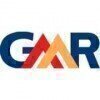
i
KEC
International
Filter interviews by
KEC International Interview Questions and Answers
202 Interview questions
Efficient planning, resource allocation, and stakeholder engagement are key to completing solar projects on time and within budget.
Conduct a thorough project assessment to identify critical tasks and potential bottlenecks.
Utilize project management tools like Gantt charts to visualize timelines and resource allocation.
Engage stakeholders early to ensure alignment and support, reducing delays in decision-making.
Imp...
AI will enhance renewable energy through improved efficiency, predictive maintenance, and optimized resource management.
Predictive Analytics: AI can analyze data from renewable energy sources to predict energy production and optimize grid management.
Smart Grids: AI can facilitate the development of smart grids that dynamically balance supply and demand, integrating various renewable sources.
Energy Storage Optimiza...
Surveying is based on fundamental theories that ensure accurate measurement and representation of the Earth's surface.
Geometric Principles: Surveying relies on geometric concepts such as points, lines, and angles to determine locations and distances accurately.
Triangulation: This method uses the principles of triangles to measure distances indirectly, often used in large-scale surveys.
Coordinate Systems: Surveying...
Surveyors play a crucial role in the planning and execution of transmission line construction, ensuring accuracy and compliance.
Site Assessment: Surveyors evaluate the proposed route for the transmission line, considering topography, land use, and environmental impact.
Boundary Identification: They establish property boundaries to avoid legal disputes and ensure the project stays within designated areas.
Elevation a...
I can enhance project efficiency through innovative strategies, improved communication, and data-driven decision-making.
Implement Agile methodologies to increase flexibility and responsiveness to changes, as seen in successful tech startups.
Introduce a project management tool like Trello or Asana to streamline task assignments and progress tracking.
Foster a culture of open communication through regular team check-...
Contouring is the process of creating contour lines on a map to represent elevation changes in a landscape.
Contouring helps visualize terrain and landforms, aiding in planning and design.
It involves drawing lines that connect points of equal elevation, known as contour lines.
For example, in civil engineering, contour maps are used for site planning and drainage design.
Contour intervals represent the vertical dista...
MS Project is user-friendly for small projects, while Primavera excels in complex project management with advanced features.
MS Project is generally easier to use for beginners, while Primavera has a steeper learning curve due to its advanced functionalities.
Primavera is better suited for large-scale projects, such as construction or engineering, where resource management is critical.
MS Project integrates well with...
Delay analysis assesses project delays to determine causes and impacts, crucial for effective project management.
Identifies the root causes of delays, such as resource shortages or unforeseen events.
Helps in quantifying the impact of delays on project timelines and costs.
Facilitates communication among stakeholders by providing clear evidence of delay causes.
Examples include using techniques like the Critical Path...
Fire extinguishers are classified based on the type of fire they are designed to combat, ensuring effective fire suppression.
Class A: For ordinary combustibles like wood, paper, and cloth.
Class B: For flammable liquids such as gasoline, oil, and grease.
Class C: For electrical fires involving live equipment.
Class D: For combustible metals like magnesium and sodium.
Class K: For cooking oils and fats, commonly found ...
ISO stands for International Organization for Standardization, which develops and publishes international standards.
Founded in 1947, ISO is an independent, non-governmental international organization.
ISO standards cover various fields, including quality management (ISO 9001) and environmental management (ISO 14001).
ISO standards help ensure safety, efficiency, and interoperability of products and services globally...
KEC International Interview Experiences
354 interviews found
I applied via Approached by Company and was interviewed in Nov 2024. There was 1 interview round.
(5 Questions)
- Q1. Transmission Tower Detailing
- Q2. Shop Drawing Bil of Meterial Tower Devlop & Re Devlop
- Q3. Raice Chimney Drawing
- Q4. Stub Template Prop Drawing
- Q5. Structural Develop and Redevelop, Marking Erection Drawing , Bolts Nuts Grip Checking and Counting, Bill of Material , Shop Drawing Cad & Dxf and Shop Drawing Checking , Prop Drawing, Raise Chimney Transm...
Interview Preparation Tips
I appeared for an interview in Dec 2024, where I was asked the following questions.
- Q1. What is your notice period
- Ans.
My notice period is typically two weeks, allowing for a smooth transition and handover of responsibilities.
Standard notice period in my current role is two weeks.
I believe this timeframe allows for proper handover and transition.
In my previous job, I was able to complete ongoing projects within my notice period.
I am open to negotiating the notice period if necessary.
- Q2. How many years of epc exp you have
- Ans.
I have over 5 years of EPC experience, focusing on project management and execution in various sectors.
Managed multiple EPC projects, including a $10 million infrastructure project.
Led a team of engineers and technicians to ensure timely project delivery.
Implemented cost-saving measures that reduced project expenses by 15%.
Collaborated with cross-functional teams to enhance project efficiency.
I appeared for an interview in Dec 2024, where I was asked the following questions.
- Q1. Rolls and Responsibilities
- Q2. Projects Completed
- Ans.
Successfully completed multiple large-scale formwork projects, enhancing structural integrity and efficiency.
Led the formwork design and execution for a 30-story residential tower in downtown, ensuring compliance with safety standards.
Implemented innovative formwork solutions that reduced construction time by 15% on a commercial complex project.
Managed a team of engineers and laborers on a bridge construction project, ...
I appeared for an interview in Jan 2025.
(2 Questions)
- Q1. Civil Engineer tag can be obtained from the company.
- Ans. Yes, of course you can get the tag if are skilled at the work.
- Q2. Is there a way to go from Foreman to Engineer?
- Ans.
Transitioning from Foreman to Engineer involves gaining education, experience, and skills in engineering principles and practices.
Pursue a degree in civil engineering or a related field to gain foundational knowledge.
Gain relevant work experience by collaborating with engineers on projects.
Obtain certifications such as PMP or LEED to enhance your qualifications.
Develop technical skills in software like AutoCAD or Revit...
Interview Preparation Tips
I applied via Naukri.com and was interviewed before Dec 2021. There were 2 interview rounds.
(2 Questions)
- Q1. Job specific/ roles and responsibilities
- Q2. Legal requirements
(2 Questions)
- Q1. Why you want to switch
- Q2. Salary expectation
Interview Preparation Tips
I applied via Approached by Company
(2 Questions)
- Q1. Site work related like foundation
- Q2. Eraction and stringing
- Q1. PEB structure lifting schedule and process
- Q2. Fabrication & erection
- Q3. Lifting process
- Q4. Before lifting of material prepare the erection plan
- Q5. Pre TBT will be completed at site for safety related
- Q6. TBT will be conducted with all representative staff and workers
- Q7. Before lifting of material crane positioning should be checked
- Q8. Then start the lifting of material
- Q9. Before lifting of material all lifting tools and tackle should be checked
- Q10. Material lifting should be slowly slowly lift and after that when material has been portioning and lock the material
- Q11. After positioning of materials then released the crane and post TBT should be conducted at site and stop the work
- Q1. What is fatal prevention plan?
- Q2. Hira & Risk matrix
Interview Preparation Tips
I appeared for an interview in Feb 2025.
(2 Questions)
- Q1. Ur best experience in line
- Ans.
My best experience as a Wireman Technician involved troubleshooting complex electrical issues and successfully completing a major project.
Successfully diagnosed and repaired a faulty wiring system in a commercial building, improving safety and efficiency.
Led a team in installing a new electrical system for a large residential project, ensuring compliance with local codes.
Implemented preventive maintenance schedules tha...
- Q2. Why this works
- Ans.
Understanding the principles behind electrical systems helps troubleshoot and maintain equipment effectively.
Electrical circuits operate on Ohm's Law, which states V=IR (Voltage = Current x Resistance).
Understanding AC vs. DC current is crucial; AC is used in homes, while DC is common in batteries.
Fuses and circuit breakers protect circuits from overloads by interrupting the flow of electricity.
Grounding is essential f...
(1 Question)
- Q1. How to handle site at your level
- Ans.
Effective site handling involves proactive risk management, compliance, and fostering a safety culture among all stakeholders.
Conduct regular site assessments to identify potential hazards and implement corrective actions.
Engage with site personnel through training sessions to promote awareness of EHS protocols.
Establish clear communication channels for reporting incidents or unsafe conditions, ensuring timely response...
(1 Question)
- Q1. What is your expectations
- Ans.
I expect a collaborative environment, opportunities for growth, and a commitment to safety and sustainability in EHS practices.
Collaboration: I look forward to working with cross-functional teams to enhance safety protocols, like conducting joint safety audits.
Professional Growth: I expect opportunities for continuous learning, such as attending EHS conferences or obtaining certifications.
Commitment to Safety: I hope t...
Top trending discussions






KEC International Interview FAQs
Some of the top questions asked at the KEC International interview -
The duration of KEC International interview process can vary, but typically it takes about less than 2 weeks to complete.
Tell us how to improve this page.
KEC International Interviews By Designations
- KEC International Assistant Manager Interview Questions
- KEC International Senior Engineer Interview Questions
- KEC International Project Manager Interview Questions
- KEC International Project Engineer Interview Questions
- KEC International Manager Interview Questions
- KEC International Safety Officer Interview Questions
- KEC International Safety Supervisor Interview Questions
- KEC International Civil Engineer Interview Questions
- Show more
Interview Questions for Popular Designations
- Assistant Manager Interview Questions
- Senior Engineer Interview Questions
- Project Manager Interview Questions
- Project Engineer Interview Questions
- Civil Engineer Interview Questions
- Safety Officer Interview Questions
- Safety Supervisor Interview Questions
- Engineering Leadership Trainee Interview Questions
- Show more
Overall Interview Experience Rating
based on 415 interview experiences
Difficulty level
Duration
Interview Questions from Similar Companies
KEC International Reviews and Ratings
based on 4.1k reviews
Rating in categories
|
Assistant Manager
690
salaries
| ₹5.2 L/yr - ₹20 L/yr |
|
Senior Engineer
477
salaries
| ₹6 L/yr - ₹14 L/yr |
|
Project Engineer
196
salaries
| ₹3 L/yr - ₹11 L/yr |
|
Civil Engineer
194
salaries
| ₹3.6 L/yr - ₹8 L/yr |
|
Safety Officer
192
salaries
| ₹2.4 L/yr - ₹7.5 L/yr |

Larsen & Toubro Limited

L&T Construction

Tata Projects

Kalpataru Projects International
- Home >
- Interviews >
- KEC International Interview Questions












